1. Technology
1.1. Technical Standards and Format Wars
1.1.1. Example of Standards
1.1.1.1. Dominant design
1.1.2. Benefits of Standards
1.1.2.1. Guarantee compatibility between products and their compliments
1.1.2.2. Reduce confusion to minds of consumers
1.1.2.3. Reduce production costs
1.1.3. Establishment of Standards
1.1.3.1. Government to mandate an industry standard
1.1.3.2. Cooperation among businesses
1.1.4. Network Effects, Positive Feedback, and Lockout
1.2. Strategies for winning a format war
1.2.1. Ensure a Supply of Complements
1.2.2. Leverage Killer Applications
1.2.3. Aggressive Pricing and Marketing
1.2.4. Cooperate with Competitors
1.2.5. License the Format
1.3. Costs in High-Technology Industries
1.3.1. Comparative Cost Economics
1.3.2. Strategic Significance
1.4. Capture First-Mover Advantages
1.4.1. First Mover Advantages
1.4.1.1. Opportunity to exploit network effects and positive feedback
1.4.1.2. Establish significant brand loyalty
1.4.1.3. increase sales volume ahead rivals
1.4.1.4. Able to create switching costs
1.4.1.5. Accumulate valuable knowledge
1.4.2. First Mover Disadvantages
1.4.2.1. significant pioneering costs
1.4.2.2. many uncertainties in a new market
1.4.2.3. risk of building wrong resources
1.4.2.4. invest in inferior or obsolete technology
1.4.3. Strategies for Exploiting First-Mover Advatanges
1.4.3.1. Complementary Assets
1.4.3.2. Height of Barriers to Imitation
1.4.3.3. Capable Competitors
1.4.3.4. Three Innovation Strategies
1.4.3.4.1. Going it alone
1.4.3.4.2. Entering into an alliance
1.4.3.4.3. Licensing the innovation
1.5. Technological Paradigm Shifts
1.5.1. Paradigm shits and decline of established companies
1.5.1.1. The nature limits to technology
1.5.1.2. Disruptive technology
1.5.2. Strategic Implications for Established Companies
1.5.2.1. Having access to knowledge
1.5.2.2. Invest in new technologies
2. Industry Environment
2.1. Strategies in a fragmented industry
2.1.1. Reasons for fragmentation
2.1.1.1. Lack of Scale Economies
2.1.1.2. Brand-loyalty in the industry may be local
2.1.1.3. Low entry barrieres
2.1.2. Consolidating Through value innovation
2.1.2.1. Chaining and Franchising
2.1.2.2. Horizontal Mergers
2.1.3. Strategies in embryonic and growth industries
2.1.3.1. Customer demand in embryonic stage
2.1.3.1.1. Limited performance and poor quality of the products
2.1.3.1.2. Customer unfamiliarity
2.1.3.1.3. Poorly developed distribution
2.1.3.1.4. Lack of complementary products
2.1.3.1.5. High productions costs
2.1.3.2. Strategic Implications
2.1.3.2.1. Innovators and early adopters don't care about the price
2.1.3.2.2. Innovators and early adopters reach through unconventional distribution channels
2.1.3.2.3. More sophisticated clientes, tolerante limitaciones of the product
2.1.3.3. Strategies in Market Growth Rates
2.1.3.3.1. New products advantage
2.1.3.3.2. Complexity
2.1.3.3.3. Compatibility
2.1.3.3.4. Trialability
2.1.4. Strategies in mature industries
2.1.4.1. Strategies to deter entry
2.1.4.1.1. Product Proliferation
2.1.4.1.2. Limit price
2.1.4.1.3. Strategic commitments
2.1.4.2. Strategies to manage rivalry
2.1.4.2.1. Price signaling
2.1.4.2.2. Price Leadership
2.1.4.2.3. Non-Price competition
2.1.4.2.4. Manage Penetration
2.1.4.2.5. Product Development
2.1.4.2.6. Market Development
2.1.4.2.7. Product Proliferation
2.1.4.2.8. Capacity Control
2.1.4.2.9. Factors Causing Excess Capacity
2.1.4.2.10. Choosing a Capacity Control Strategy
2.1.5. Strategies in Declining Industries
2.1.5.1. Leadership strategy
2.1.5.2. Niche strategy
2.1.5.3. Harvest strategy
2.1.5.4. Divestment strategy
2.1.5.4.1. What is DIVESTMENT? What does DIVESTMENT mean? DIVESTMENT meaning, definition & explanation
